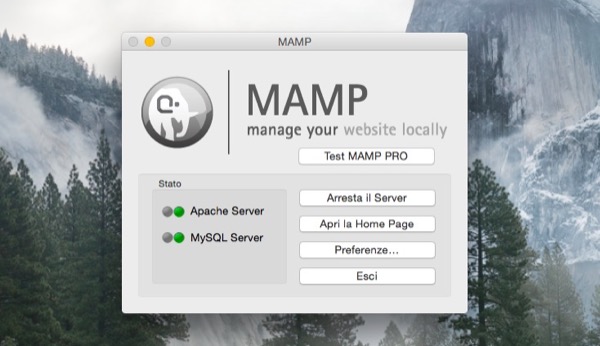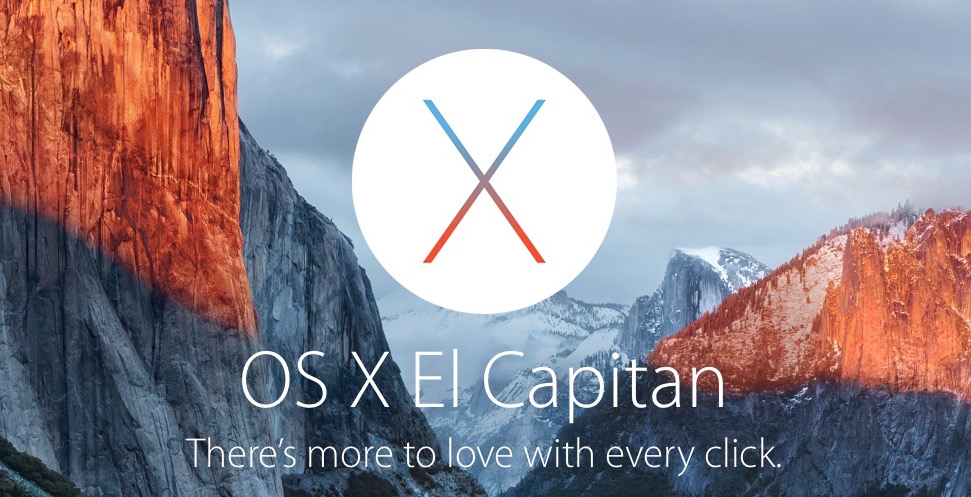- Apache For Mac Yosemite High Sierra
- Apache For Mac Yosemite Dmg
- Apache For Mac Yosemite 10.10
- Apache For Mac Yosemite Installer
The current Apache OpenOffice supports Apple MacOS X version 10.7 (Lion) - 10.11 (El Capitan) and macOS 10.12 (Sierra) - 10.13 (High Sierra). Hardware requirements CPU: Intel Processor. Apache 2.4 (OSX 10.10 Yosemite) has a different structure from Apache 2.2 (OSX 10.9) for the Directory directive in Module modauthzcore. EDIT: If you are setting up Apache from the START, please follow this instruction set to setup apache and php on OSX 10.10 Yosemite. Click on the link above to download Apache Directory Studio for macOS. The download appeares in the Downloads folder in Finder. Double-click on the disk image to open it. Drag-and-drop the Apache Directory Studio application on the Applications folder to install it. I cant change my web root in apache, for some reason it points to /Sites/folder1/folder2 instead of it pointing to /Sites. Change web root apache mac OS X. Ask Question Asked 8 years, 7 months ago. Active 2 years, 3 months ago. Viewed 82k times 21. I cant change my web root in apache, for some reason it points to /Sites/folder1/folder2. The current Apache OpenOffice supports Apple OS X version 10.7 (Lion), 10.8 (Mountain Lion), 10.9 (Mavericks), 10.10 (Yosemite), 10.11 (El Capitan) and macOS 10.12 (Sierra), 10.13 (High Sierra), 10.14 (Mojave), 10.15 (Catalina). The last OpenOffice version supporting Mac OS X 10.4 (Tiger), 10.5 (Leopard), 10.6 (Snow Leopard) is OpenOffice 4.0.1.
macOS Support¶
The current Apache OpenOffice supports Apple OS X version10.7 (Lion), 10.8 (Mountain Lion), 10.9 (Mavericks), 10.10 (Yosemite),10.11 (El Capitan) and macOS 10.12 (Sierra), 10.13 (High Sierra),10.14 (Mojave), 10.15 (Catalina).
The last OpenOffice version supporting Mac OS X 10.4 (Tiger),10.5 (Leopard), 10.6 (Snow Leopard) is OpenOffice 4.0.1.
Hardware Requirements¶

- CPU: Intel Processor
- Memory: Minimum 512 Mbytes RAM.
- Storage: At least 400 Mbytes available disk space for a default install via download.
- Graphics: 1024 x 768 or higher resolution with 16.7 million colours.
Additional Resources¶
- Click here to download
- Click here to get install instructions for OpenOffice on macOS
- Click here to get help and support in the Community Support Forums
Apache For Mac Yosemite High Sierra
macOS Update: While these instructions still work, there are new posts for recent versions of macOS, the latest being Install Apache, PHP, and MySQL on macOS Mojave.
Apache For Mac Yosemite Dmg
PHP Update: Mac OS X Yosemite comes pre-installed with PHP version 5.5 which has reached its end of life. After you complete this post, you should upgrade PHP on Mac OS X.
I recently upgraded to Mac OS X Yosemite. It seems Mac OS X Yosemite makes my original post on installing Apache, PHP, and MySQL on Mac OS X obsolete. Specifically, Yosemite includes Apache 2.4. This post is a complete update for installing Apache, PHP, and MySQL on Mac OS X Yosemite.
A reminder that Mac OS X runs atop UNIX. So most UNIX software installs easily on Mac OS X. Furthermore, Apache and PHP come packaged with Mac OS X. To create a local web server, all you need to do is enable them and install MySQL.
I am aware of the web server software available for Mac OS X, notably MAMP. These get you started quickly. But they forego the learning experience and, as most developers report, can become difficult to manage.
Getting Started
First, open the Terminal app and switch to the root user to avoid permission issues while running these commands.
Enable Apache on Mac OS X
Verify It works! by accessing http://localhost
Enable PHP for Apache
First, make a backup of the default Apache configuration. This is good practice and serves as a comparison against future versions of Mac OS X.
Now edit the Apache configuration. Feel free to use TextEdit if you are not familiar with vi.
Apache For Mac Yosemite 10.10

Uncomment the following line (remove #):
Restart Apache:
You can verify PHP is enabled by creating a phpinfo() page in your DocumentRoot.
The default DocumentRoot for Mac OS X Yosemite is /Library/WebServer/Documents. You can verify this from your Apache configuration.
Apache For Mac Yosemite Installer
Now create the phpinfo() page in your DocumentRoot:
Verify PHP by accessing http://localhost/phpinfo.php
Install MySQL on Mac OS X
Note: If you are upgrading MySQL you should skip this section and instead read this.
- Download the MySQL DMG for Mac OS X
- Install MySQL

The README suggests creating aliases for mysql and mysqladmin. However there are other commands that are helpful such as mysqldump. Instead, I updated my path to include /usr/local/mysql/bin.
Note: You will need to open a new Terminal window or run the command above for your path to update.
I also run mysql_secure_installation. While this isn't necessary, it's good practice.
Connect PHP and MySQL
You need to ensure PHP and MySQL can communicate with one another. There are several options to do so. I do the following:
Additional Configuration (optional)
The default configuration for Apache 2.4 on Mac OS X seemed pretty lean. For example, common modules like mod_rewrite were disabled. You may consider enabling this now to avoid forgetting they are disabled in the future.
I edited my Apache Configuration:

- CPU: Intel Processor
- Memory: Minimum 512 Mbytes RAM.
- Storage: At least 400 Mbytes available disk space for a default install via download.
- Graphics: 1024 x 768 or higher resolution with 16.7 million colours.
Additional Resources¶
- Click here to download
- Click here to get install instructions for OpenOffice on macOS
- Click here to get help and support in the Community Support Forums
Apache For Mac Yosemite High Sierra
macOS Update: While these instructions still work, there are new posts for recent versions of macOS, the latest being Install Apache, PHP, and MySQL on macOS Mojave.
Apache For Mac Yosemite Dmg
PHP Update: Mac OS X Yosemite comes pre-installed with PHP version 5.5 which has reached its end of life. After you complete this post, you should upgrade PHP on Mac OS X.
I recently upgraded to Mac OS X Yosemite. It seems Mac OS X Yosemite makes my original post on installing Apache, PHP, and MySQL on Mac OS X obsolete. Specifically, Yosemite includes Apache 2.4. This post is a complete update for installing Apache, PHP, and MySQL on Mac OS X Yosemite.
A reminder that Mac OS X runs atop UNIX. So most UNIX software installs easily on Mac OS X. Furthermore, Apache and PHP come packaged with Mac OS X. To create a local web server, all you need to do is enable them and install MySQL.
I am aware of the web server software available for Mac OS X, notably MAMP. These get you started quickly. But they forego the learning experience and, as most developers report, can become difficult to manage.
Getting Started
First, open the Terminal app and switch to the root user to avoid permission issues while running these commands.
Enable Apache on Mac OS X
Verify It works! by accessing http://localhost
Enable PHP for Apache
First, make a backup of the default Apache configuration. This is good practice and serves as a comparison against future versions of Mac OS X.
Now edit the Apache configuration. Feel free to use TextEdit if you are not familiar with vi.
Apache For Mac Yosemite 10.10
Uncomment the following line (remove #):
Restart Apache:
You can verify PHP is enabled by creating a phpinfo() page in your DocumentRoot.
The default DocumentRoot for Mac OS X Yosemite is /Library/WebServer/Documents. You can verify this from your Apache configuration.
Apache For Mac Yosemite Installer
Now create the phpinfo() page in your DocumentRoot:
Verify PHP by accessing http://localhost/phpinfo.php
Install MySQL on Mac OS X
Note: If you are upgrading MySQL you should skip this section and instead read this.
- Download the MySQL DMG for Mac OS X
- Install MySQL
The README suggests creating aliases for mysql and mysqladmin. However there are other commands that are helpful such as mysqldump. Instead, I updated my path to include /usr/local/mysql/bin.
Note: You will need to open a new Terminal window or run the command above for your path to update.
I also run mysql_secure_installation. While this isn't necessary, it's good practice.
Connect PHP and MySQL
You need to ensure PHP and MySQL can communicate with one another. There are several options to do so. I do the following:
Additional Configuration (optional)
The default configuration for Apache 2.4 on Mac OS X seemed pretty lean. For example, common modules like mod_rewrite were disabled. You may consider enabling this now to avoid forgetting they are disabled in the future.
I edited my Apache Configuration:
I uncommented the following lines (remove #):
Note: Previous version of Mac OS X ran Apache 2.2. If you upgraded OS X and previously configured Apache, you may want to read more about upgrading to to Apache 2.4 from Apache 2.2.
Free vpn server for mac. If you develop multiple projects and would like each to have a unique url, you can configure Apache VirtualHosts for Mac OS X.
If you would like to install PHPMyAdmin, return to my original post on installing Apache, PHP, and MySQL on Mac OS X.
Find this interesting? Let's continue the conversation on Twitter.
